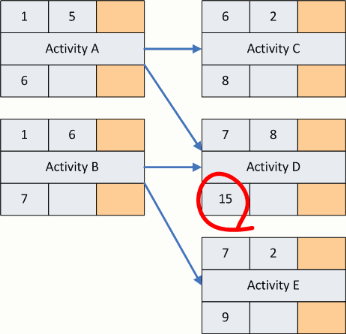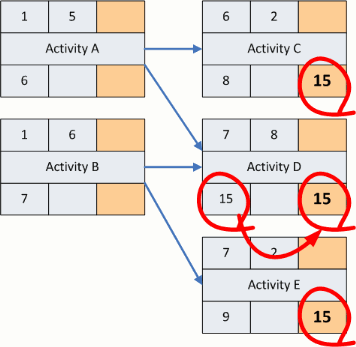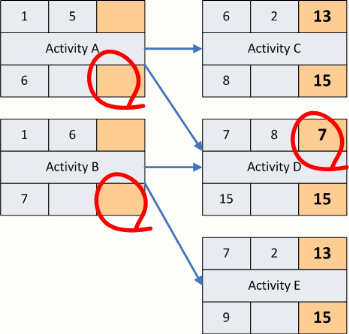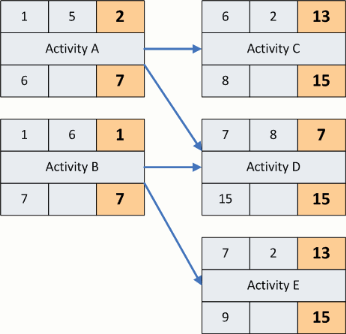multiple followers
Now let’s look at example that is a bit more complicated. In this example there are five activities who do not share the same set of prior activities. Special care must be taken to understand the purpose of the backward pass when such a situation is encountered. Remember that the purpose of the backward pass is to determine the latest that an activity can finish (or start) without impacting the overall project. When there is a question about which possible late finish time for a given activity should be selected, the earliest time, is therefore, the choice.
As before start the backward pass by finding the project end time and setting that late finish time of all ending activities as the late finish time of all latest activities. In a real schedule, we should have a single “end job” activity, but in this case we will find the latest finish time and copy it over to the late finish times of the ending activities as shown in the diagram below.

Now we can calculate the late start times of each of these three ending activities. The resulting arithmetic is shown in the figure below.

Given that there are multiple possible late finish times for Activities A and B, we have to decide which one to select. According to our rule we select the earliest of the incoming Late Finish Times. This is shown in the figure below.

Finally we can complete the backward pass calculation for Activity A and Activity B as shown in the following figure.
